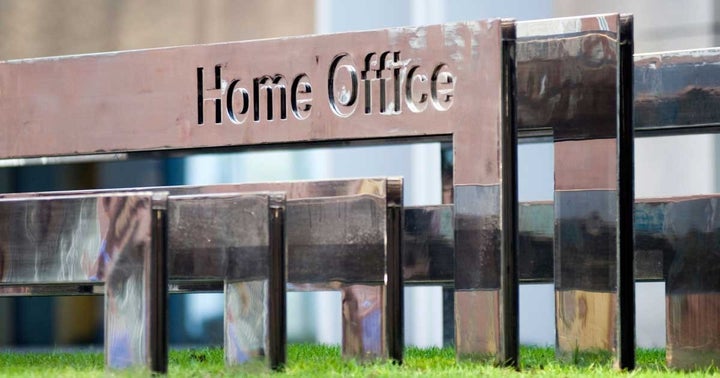
The Home Office, to bring greater transparency around the Prevent programme, recently released data on individuals referred to and supported by Prevent from April 2015 to March 2016.
For people working within the Prevent programme the release was seen as an opportunity to talk about the hundreds diverted away from terrorism, to show that Prevent does look at all forms of terrorism, and is an effective multi-agency programme.
On the whole the release was welcomed and received fairly positive and balanced coverage from both the media and critics trying to better understand the process behind referrals. I was however surprised to see some responses that reported the figures in a way that heavily questioned the programme’s effectiveness.
One particular tweet from a national newspaper was linked to an article with the headline ‘Only 5% of people referred to Prevent extremism scheme get specialist help’.
It is the kind of headline that sticks, reading the headline from a reputable newspaper you may begin to understand why some may have concerns if you were to only look at the figures on their own and without understanding the context.
For example, from a total of 7,631 individuals referred between April 2015 and March 2016, the education sector was the largest source of referrals at 33% and individuals referred under the age of 15 made up 28% of total referrals. Of the 381 individuals that received support through the Channel programme, 108 were aged under 15 (28%).
But what you need to make sense of these figures is look at them within the wider context of Prevent and broader safeguarding. The reality is that many Prevent referrals of children under 15 are linked to wider family issues and they can be referred as siblings or children of those convicted of terrorism offences. In many cases there isn’t the need for specialist mentoring intervention via Channel and mainstream support, for example vocational or mental health services, are often enough to manage vulnerability related to radicalisation.
Referrals to mainstream or ‘other services’ does not mean that a concern was not present but they may not have met thresholds to warrant Prevent intervention. Other safeguarding responses can be identified early enough before concerns became serious enough to warrant Channel support.
It is also significant that these figures are related to the period April 2015 to March 2016 and the Prevent Duty was only introduced in July 2015, following calls for more robust policy after three school girls joined Daesh. The education sector is therefore key in safeguarding our children not just from the risks of grooming for radicalisation but also other risks too.
The number of Prevent referrals (7,631) is significantly lower than safeguarding overall (621,470). Within this, Prevent referrals from the education sector under the age of 15 amounted to approximately 0.014% of the total number of children in school. When compared to total referrals for safeguarding overall, individuals referred from schools amounted to 1.21% of children attending school being referred for a wider safeguarding concern.
We must also understand the process around Channel. Firstly, Channel is an entirely voluntary and confidential process. Channel panels which are multi-agency will only offer support where they consider it necessary and proportionate. What the figures don’t show is that from the 691 individuals who did not receive support, how many refused consent to be supported, or how many were then referred back to other services, such as health, because they were not well enough to receive support and posed a risk because of their mental state.
One of the charges against the Prevent programme is that it disproportionately focuses on Muslims, with some anti-Prevent groups even going as far as to say that Prevent had institutionalised Islamophobia. If anything, the figures should have given some insight and reassurance that this wasn’t the case.
According to the Muslim Council of Britain’s website, data extracted from the 2011 census would suggest approximately 8.1% of all school aged children were of the Muslim faith. By 2015/16 this figure is likely to have increased, but assuming it was similar, 8.1% would represent approximately 693,322 school aged children who would identify as being Muslim.
There were 1,566 Prevent referrals related to Islamist concerns from Education, assuming these were all from schools, this would amount to approximately 0.23% of the total number of Muslim children in school, a figure hardly representing evidence of institutionalised Islamophobia or a sustained and disproportionate campaign targeting Muslim children. If anything, the figures show that only individuals, including children who show signs of vulnerability to extremism, are referred.
Common examples of vulnerability being looked at would include signs such as the sharing of terrorist propaganda, including beheading videos, expressing support for groups such as Daesh or National Action - a recently proscribed extreme right wing group.
In writing this piece my attention isn’t to deflect away from legitimate criticism or questioning of Prevent. I encourage constructive critiques and debate to help strengthen policy - the release of Prevent figures is therefore a welcome first step. In Birmingham, where I am responsible for the coordination of Prevent on behalf of the local authority, we are aware of the need to support front-line workers, especially teachers, with understanding how the Prevent duty applies to their sectors.
We are also aware of the challenges schools continue to face in the areas of safeguarding and ensuring practice is effective and proportionate. As part of Prevent training in Birmingham we have introduced workshops on ‘unconscious bias’ to ensure that referrals are not skewed by perceptions or biases. We also encourage schools to use the resources available to them via the Educate Against Hate website - it provides further practical assistance and guidance
Prevent isn’t without it’s challenges, but it is working and requires the support of all sections of society. I would ask critics to work with us in helping to make Prevent more effective and to look at the practice behind the figures which often gets lost behind the headlines.
